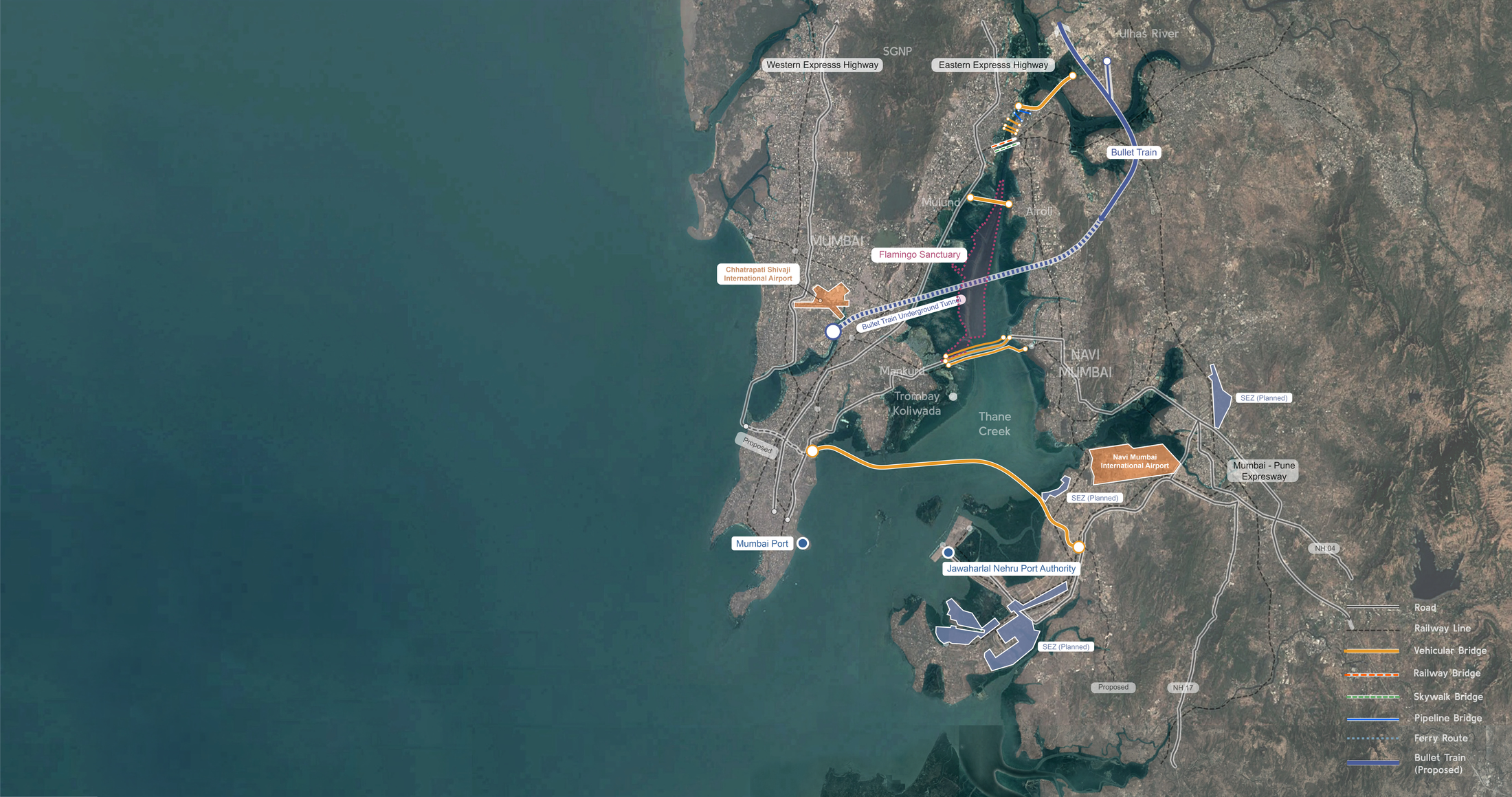Up until the late 1990s, Mumbai region’s big cities did not treat sewage, instead indiscriminately letting it out into the Creek. Thereafter pollution control norms mandated treating of such waste which led to setting up of sewage treatment plants (STPs), although Pollution Control Board reports show such STPs continually flouted treatment norms.
With intervention from environment activists, more stringent municipal wastewater treatment norms requiring recycling of sewage and conversion of energy to waste were mandated during 2016-2019.
New STPs are now being planned but they too are located mainly in estuarine marshlands – building on long histories of dumping in the sea.
Supported by the flushing action of the Thane Creek, Mumbai, Thane and Navi Mumbai, have been able to grow and not only because the Creek has absorbed their sewage. Solid waste has also been used to make land out of the creek, a lucrative practice that has continued from colonial times to after Indian Independence.
Mirza describes how two yards of kachra (garbage) was used to level one yard of ground in the Deonar dumpyard. The colonial BMC classified this land as khajan (coastal/riverside land which is marshy and low lying).
By 1908, the BMC’s Health Dept had sponsored 116 acres of reclaimed creek land through dumping garbage. Such reclamations were done to cost effectively treat waste, drain marshlands that public health officials of the mid-19th century saw as contributing to disease (McFarlane, xx), and create valuable land in the process.
While the growing mountains of waste in dumpsites in the Creek have for long silently harmed the communities residing and working in and around, it caught the public eye only when it proved hazardous to a larger, more middle class public.
The Deonar dumpyard, spread over 132 ha and encircled by the Creek on 3 sides, has mountains of waste as tall as an 18 storey building (Roy, xxx). The noxious gases it generates led to a serious fire in 2016, which spread to Mulund landfill, and which gassed the whole city for nearly a week.
This generated pressure from middle class residents to close the landfills and use ‘scientific’ methods to treat the waste.
But both citizen complaints and governmental action have narrowly focused on risks to (selective) human life from visible (usually solid) waste and those faced on dry land.
For instance, how waste is experienced by waste pickers as they rummage through garbage heaps (resulting in calls for ‘scientific’ treatment of waste) or how the health of residents of nearby settlements are affected by noxious gases and smells (which dictate the capping/sealing of landfills).
But in a city made of watery ground, thats flooded with monsoonal rains for many months, waste cannot be confined to dry land.
We need to pay attention to how waste transforms the Creek ecosystem through a series of complex reactions as hot water from the power plant, sewage and industrial effluents, garbage and construction debris all interact to produce a Creek that is increasingly muddy and toxic.
These wetland transformations hold different and unequal harms and possibilities for both human and beyond human.
We take you now to these stories of encounter, mutation and unequal harm between human and beyond human, as they navigate siltation and muddiness in the tidal Creek.









